News
CA120: Surprise! How some voters chose partisanship
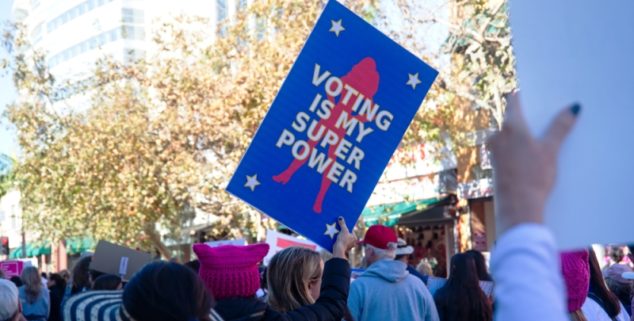 A march for women's rights in Santa Ana in January 2018. (Photo: Juan Camilo Bernal, via Shutterstock)
A march for women's rights in Santa Ana in January 2018. (Photo: Juan Camilo Bernal, via Shutterstock)When a supermarket wants to sell candy or a tabloid magazine, they put it near the checkout counter.
When you get a fundraising email, the “donate now” is always in the first paragraph.
Even in journalism, the clickbait is put right up top, drawing readers and driving traffic.
It’s marketing 101: If you want to sell something, don’t hide the ball – put that thing you’re selling right out in front.
If the state makes selecting a political party even a tiny bit of a chore, more voters will just elect to become independent.
It’s like we are living in an attention deficit-addled, multi-tasking, perpetually distracted world, and we understand that the way things are presented to someone can have a big impact on their choices.
But what about something as important as partisan affiliation? That’s a value that runs a bit deeper than convenience.
You wouldn’t become a Democrat or Republican or drop out of your political party just because it wasn’t at the checkout counter, would you?
Well, unbeknownst to about everyone involved, the state just ran this experiment, and the answer was a resounding “Yes.” If the state makes selecting a political party even a tiny bit of a chore, more voters will just elect to become independent.
This first sign of this came up during the 2018 election cycle when we saw that the implementation of the new “automatic” voter registration at the Department of Motor Vehicles was correlated with a big jump in non-partisan registrations.
Looking at the data in this chart from 2018, built from registration rates each two weeks from March 2017 to December 2018, you can clearly see how DMV registrations had traditionally been fairly stable with Democrats in a range of 35%-42%, No Party Preference at around 28%-35%, and Republican registration hovering around 20%-27%.
Voters, having spent potentially hours at the DMV were apparently so disinterested in the whole registration process that they couldn’t bother with another step.
But with the implementation of the new process, this changed dramatically: NPP registrations began averaging 50% and spiked as high as 60%, while Democrats fell to 30% and Republicans dropped to 15%-17%.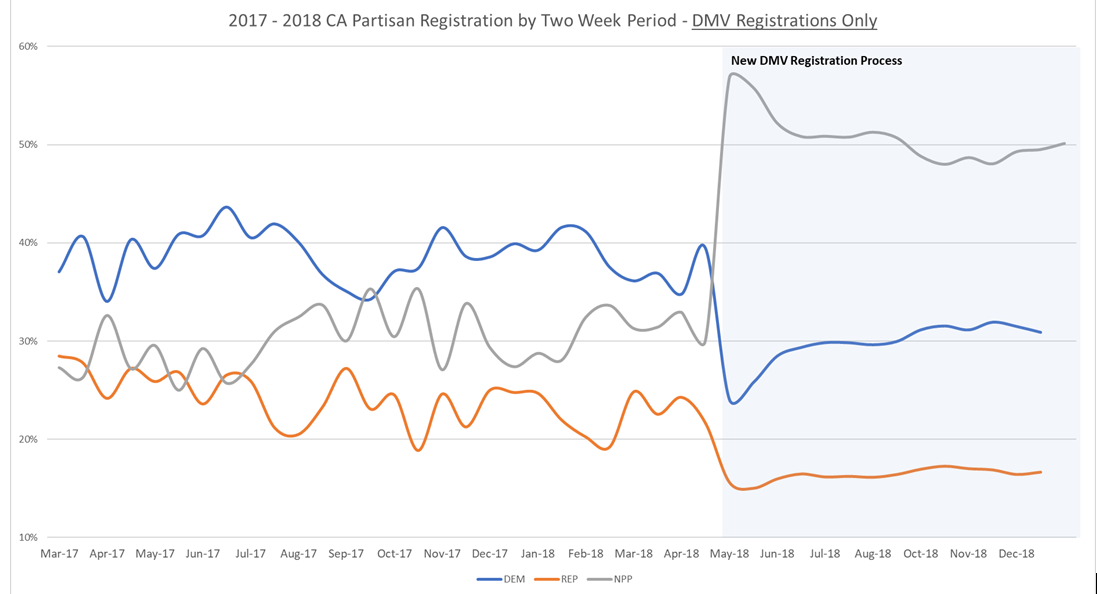
Initially, observers figured this was an error, that the DMV or the Secretary of State must be mis-coding or improperly registering voters. But while it was natural to point a finger at the embattled DMV or the Secretary of State, further exploration suggested it was nothing more than a rather small change in the registration process which was causing the shift!
The new program at the DMV included a section where you could be “No Party / None” or click a button to see and then select a political party. Voters, having spent potentially hours at the DMV were apparently so disinterested in the whole registration process that they couldn’t bother with another step and just allowed themselves to become an independent voter.
The rates of registration as No Party Preference was pretty astonishing. Not only were 60% of new registrants becoming NPP, a whopping 34% of people who walked into the DMV as Democrats or Republicans were leaving as NPP.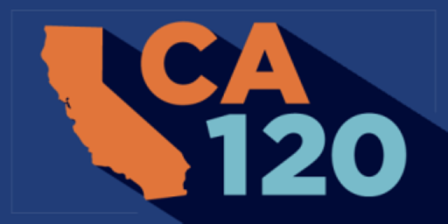
A subsequent poll by Capitol Weekly found that half of voters who were registered at the DMV didn’t remember doing it, and 31% of the newly registered NPPs thought they were either a Democrat or Republican. Potentially, this is a potential major headache as we head into the 2020 elections where this will impact their ability to vote in the primaries.
While there wasn’t any public acknowledgement of this by the DMV, and no signal from the Secretary of State that this was even on their radar, someone must have noticed and, quietly, on Jan. 1, 2019, changed the system back.
As of the beginning of the year, instead of having voters presented with a “no party” option or click a box to see the political parties, voters were shown all political parties on the first page, and at the bottom they can find a “No Party” option, similar to party selection form used before May, 2018.
And the impact? Pretty amazing, as can be seen in the graphic below.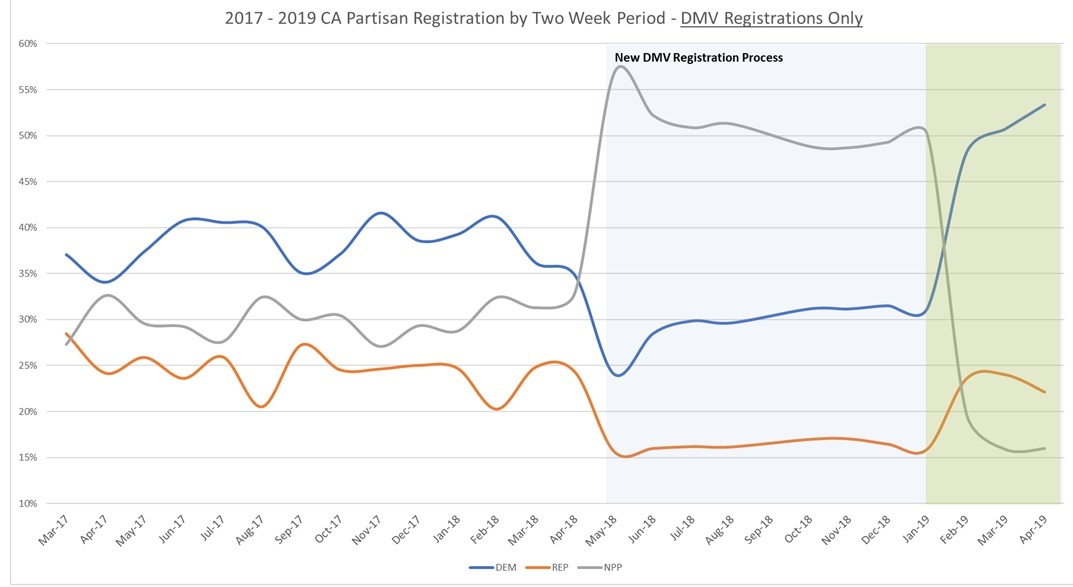
The number of NPP voters, which was hovering around 50% of voters from May to December of 2018 dropped to an average of 19% since the beginning of the year. Among new registrants, the number dropped from 60% NPP to 24% based on the change on the form. And where we saw 34% of Democrats and Republicans switching to NPP in the May-December 2018 period, that dropped to just 9% after the change.
We will have to watch this over the next several months.
The voter registration system is critically flawed when California voters say they are “independent” but there’s no such thing as an actual “independent” voter registration.
As we head into a partisan primary season, we would expect registrations to begin to track more partisan, and if there is a competitive Republican primary, we could begin to see some greater signs of enthusiasm in those registration numbers. With more data, we will be able to better understand the actual impact of this rather short period of time in which the registration form changed, and registration rates differed as a result.
While some will call this most recent change a “fix” because it returns us to something more akin to the registration process being used prior to the update in 2018, it’s not that simple.
It could be said that by removing the separate “no party” option, and just putting that at the bottom of the page, the DMV is returning to a form that makes it harder for voters to understand how to register as an independent. Suppressing non-partisan registration could favor the parties and help prop their numbers, but that doesn’t mean that it is inherently better for voters themselves, or that it matches their voter intent.
Additionally, the whole terminology of the voter registration system is critically flawed when California voters say they are “independent” but there’s no such thing as an actual “independent” voter registration.
California should also ditch the bureaucratic terminology of NPP and use the terminology that all Californians use.
Making matters worse, California voters have two options – “No Party Preference (NPP)” which is not really a plain English term, or the “American Independent Party (AIP),” an extremist conservative party with nearly a half million voters, but has the word “independent” in the name.
Surveys done by Capitol Weekly show that 97% of AIP voters can’t even name their party when they are asked and 75% say they are registered “independent” while single-digit percentages believe they are Democrats or Republicans.
As the following chart shows, the rates of registration as AIP has been around 3%-5%, but dropped significantly down to 1%-2% during the window of time that the DMV registrations were skewing voters more NPP.
This still reflects thousands of confused voters, but it was an improvement. As could be expected, the AIP registration rate has bounced back since the return to the old form.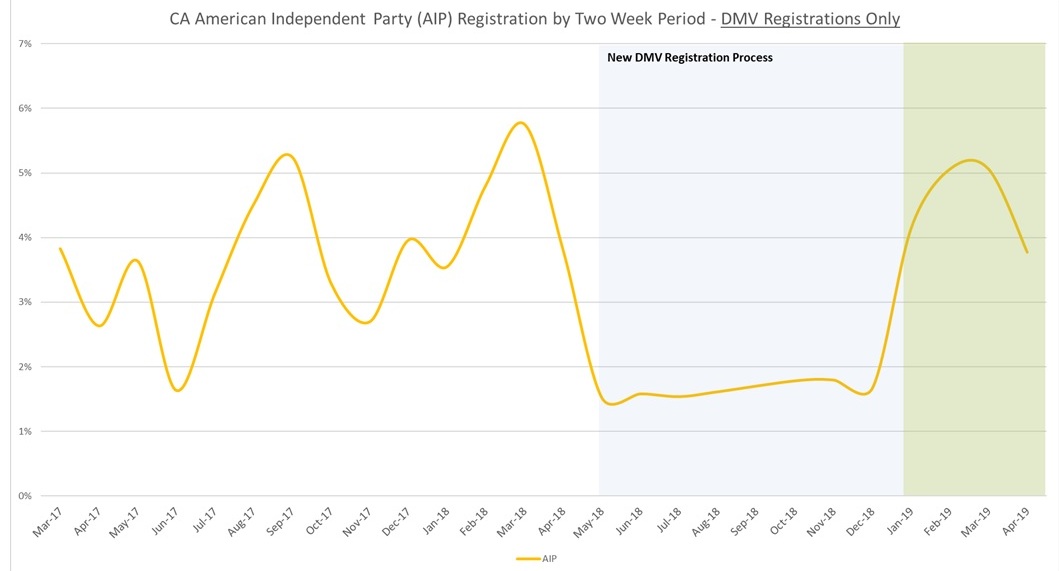
A long term fix to this would be to eliminate the “independent” term from the AIP.*
California should also ditch the bureaucratic terminology of NPP and use the terminology that all Californians use, calling non-partisan voters “independent” or “independent/non-partisan.”
One legislative approach is currently being made by Assemblywoman Lorena Gonzalez, D-San Diego, with Assembly Bill 681. It doesn’t go as far as actively trying to fix any of these registrations for improperly registered voters, or changing the names of the parties.
But it does call on counties to send a series of mailings to voters leading up to the 2020 Primary letting them know what party their party registration is andlets them know the rules for anyone who wishes to participate in the Democratic or Republican presidential primary elections.
This kind of information could definitely help voters who either were registered AIP and don’t know it, or who were registered NPP at the DMV during this window of time that the registration form was potentially misleading voters into leaving their preferred political party.
This whole experience should be a learning process for California’s elections advocates and the media — making it clear that how you organize the registration process, how you ask the questions, and the way you present information is critically important to properly administering our democratic process.
Bottom line: We should be doing more, not less, to educate the voting public and make sure voter intent is not being lost because of the way some bureaucrat sets up a form.
—
*Editor’s Note: Clarifies 29th graf by deleting reference to AIP-Constitution Party affiliation, which ended following a factional legal battle that stemmed from the 2008 elections. Paul Mitchell, a veteran political consultant, is a regular contributor to Capitol Weekly. He is the creator of the CA120 column, vice president of Political Data and owner of Redistricting Partners, a political strategy firm.
Want to see more stories like this? Sign up for The Roundup, the free daily newsletter about California politics from the editors of Capitol Weekly. Stay up to date on the news you need to know.
Sign up below, then look for a confirmation email in your inbox.

Leave a Reply